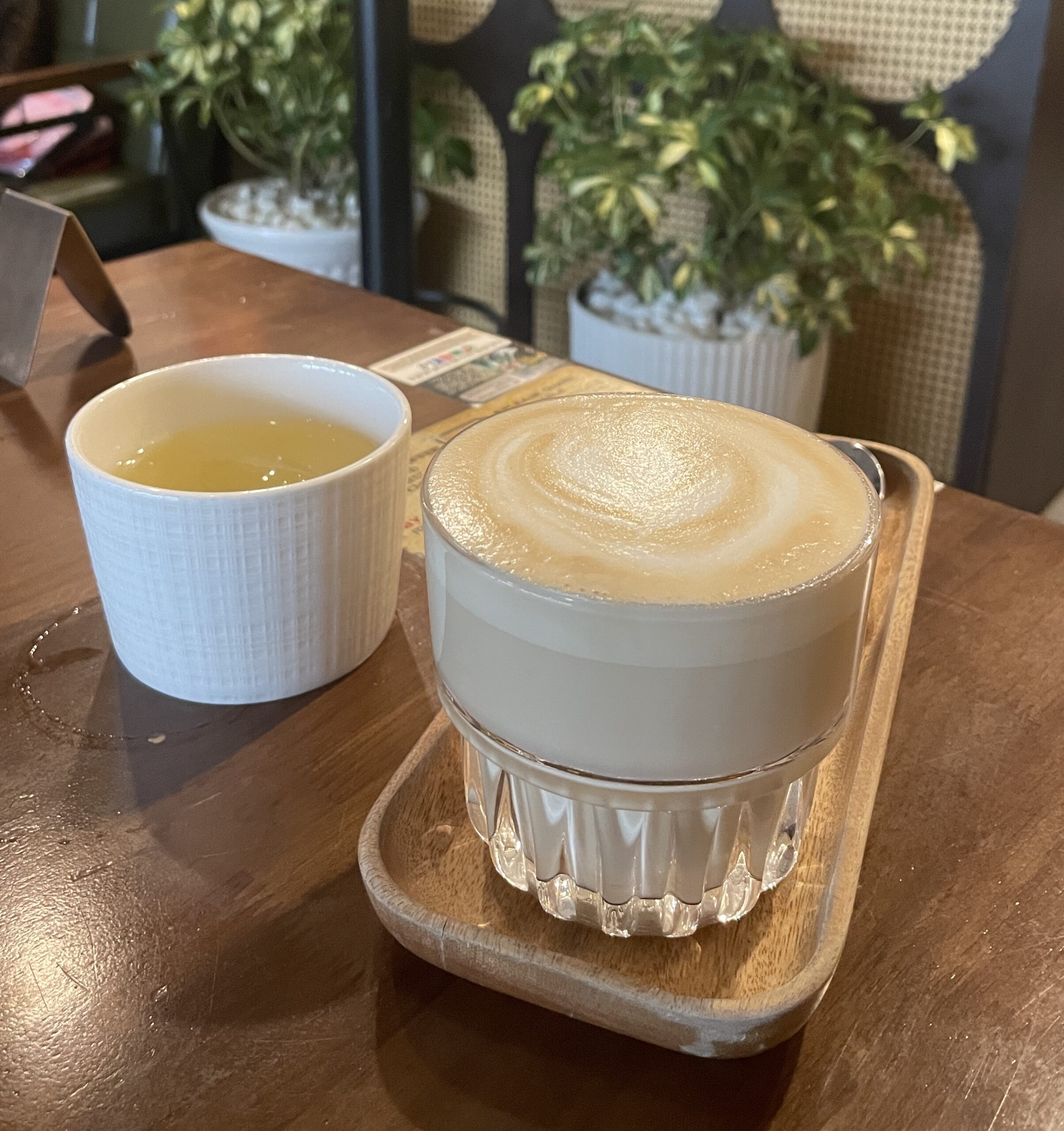7 Must-Try Vietnamese Coffee Types
Before visiting Vietnam, I thought I knew Vietnamese coffee. Growing up in Toronto, I’d enjoyed it a few times, but I had no idea just how many unique variations existed, or how deeply coffee is tied to everyday life here.
Coffee culture in Vietnam goes far beyond a simple morning brew. It’s creative, social, and full of unexpected twists, from smooth condensed milk lattes to rich blends with eggs, yogurt, or even avocado.
In this guide, I’ll share seven must-try Vietnamese coffee types that showcase the country’s inventiveness and passion for its national drink.
Vietnamese Iced Coffee with Condensed Milk (Cà phê sữa đá)
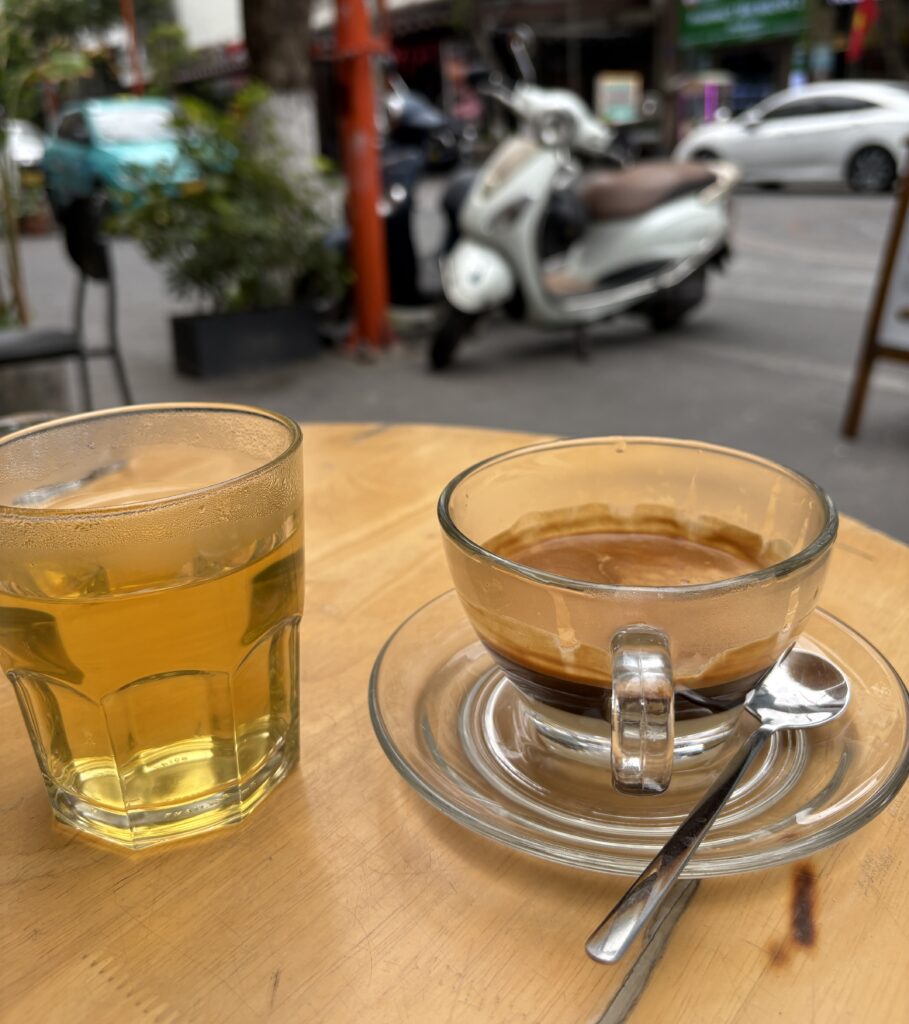
Arguably the most famous Vietnamese coffee style, cà phê sữa đá is a sweet, strong, and refreshing drink you’ll find on nearly every street corner.
It’s made by brewing robusta coffee through a traditional phin filter, then mixing it with thick, creamy condensed milk before pouring it over ice.
This is my go-to when I’m looking for a serious kick of energy. I’m not much of a black coffee drinker, but this one hits just right, it can be enjoyed both hot and cold.
In the sweltering heat of Saigon, I almost always have it iced, but on a chilly morning in Da Nang or Hanoi, a warm cup feels just as comforting.
In the sweltering heat of Saigon, I almost always have it iced, just one of many drinks I recommend in my 4-day Saigon itinerary, but on a chilly morning in Da Nang or Hanoi, a warm cup feels just as comforting.
Black Vietnamese Coffee (Cà phê đen)
For those who prefer their coffee bold and unadulterated, cà phê đen is Vietnam’s answer. Made with strong robusta beans brewed through a phin filter, it’s intense, rich, and naturally a bit more bitter than arabica-based coffees.
You can order it hot for a slow, warming sip, or iced for a sharper, more refreshing hit.
You’ll often see older Vietnamese men sipping on black coffee at streetside cafés, slowly enjoying the morning while reading the paper, chatting with friends, and smoking a cigarette.
While I don’t usually go for black coffee, I can see why it’s so popular, especially in the early mornings when streets are buzzing. In the cooler air of Hanoi, a hot cup feels like it wakes you up twice: once with the caffeine, and once with its deep, roasted aroma, the perfect start to a day exploring the city on a Hanoi itinerary.
Salt Coffee (Cà phê muối)
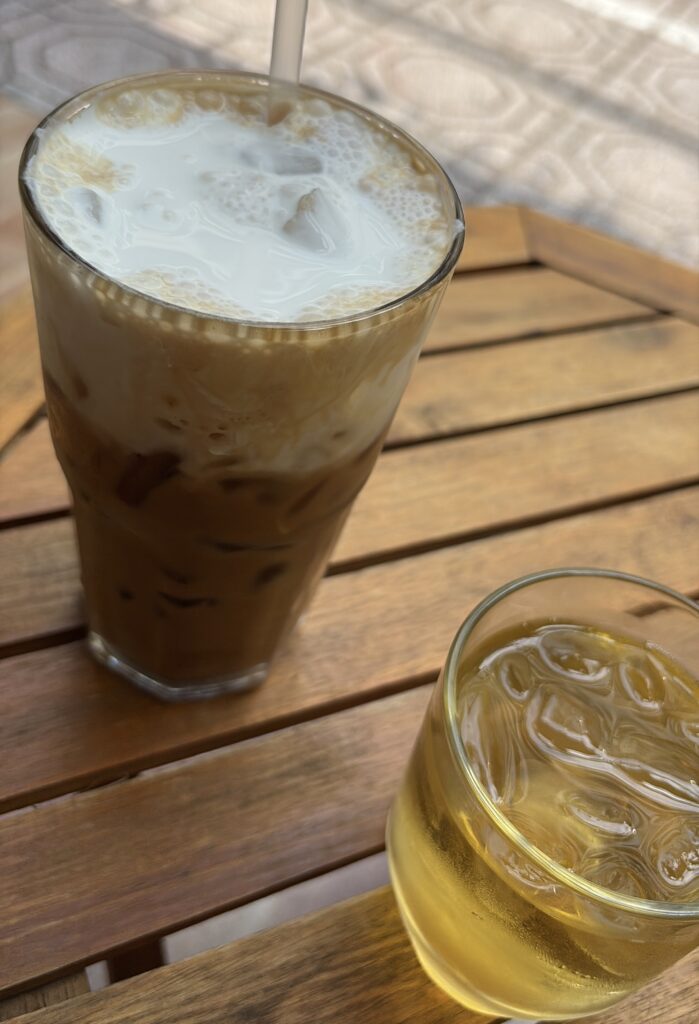
Salt coffee originated in Huế and starts with a base of strong Vietnamese brewed coffee, topped with a rich salted whipped cream.
This was by far my favorite coffee discovery in Vietnam, truly unforgettable and delicious, slightly addictive too. It’s authentic, deeply rooted in Vietnamese coffee heritage, and absolutely nothing like a Starbucks Frappuccino.
The salt doesn’t make it taste salty; instead, it enhances the sweetness and balances the robust bitterness, much like salted caramel. Salt coffee is quite popular and can be enjoyed all over Vietnam, though Huế is considered its home.
Locals in Huế will serve your salted coffee layered with condensed milk at the bottom, followed by coffee in the middle, and the salted foam on top. You stir to combine before sipping.
Traditionally, you start by scooping a little of the foam with a spoon to taste it on its own, then mix it gently into the coffee before drinking. By the way, if you’re in Da Nang, I highly recommend visiting Hue, the Imperial City there offers a memorable glimpse into Vietnam’s history
Egg Coffee (Cà phê trứng)
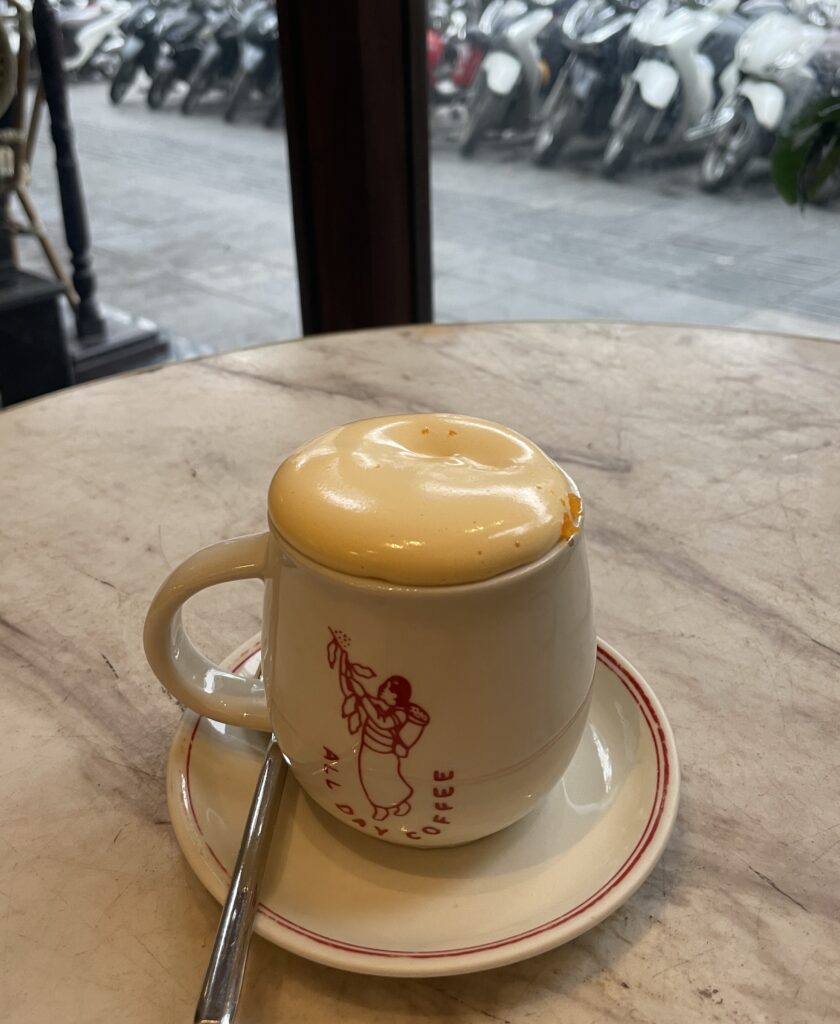
One of the most unique Vietnamese coffee types, cà phê trứng is exactly what it sounds like, coffee topped with a frothy, creamy mixture of egg yolk, sugar, and condensed milk.
Created in Hanoi in the 1940s when milk was scarce, this rich, dessert-like drink has since become a beloved specialty.
It’s usually served hot in a small cup, sometimes sitting in a bowl of warm water to keep the temperature just right. The texture is somewhere between a latte foam and custard, making it feel more like a sweet treat than your typical morning coffee.
I’ve had it in both Hanoi and Da Nang, and each place has its subtle twist, but nothing beats sipping it in a cozy Hanoi café on a chilly morning, especially after a day exploring a Da Nang itinerary filled with beaches, markets, and local eats.
Coconut Coffee

If there’s one Vietnamese coffee that feels like dessert in a glass, it’s coconut coffee. Originating in Hải Phòng but now popular across the country, this drink combines strong Vietnamese coffee with a blend of coconut milk, condensed milk, and ice, creating a creamy, tropical flavor that’s perfect for hot days.
It’s often served either as a smooth, blended drink (almost like a coffee milkshake) or with the coconut cream floating on top of the coffee so you can mix it in yourself.
I love the blended version on a humid afternoon in Saigon; it’s refreshing, rich, and just sweet enough without being overpowering. Sometimes, cafés even add shredded coconut or dried, crunchy bits of coconut, or a sprinkle of cocoa powder for an extra treat.
I absolutely fell in love with coconut coffee. I was so confused when I saw it on the menu, and honestly, I’m surprised it’s not more popular around the world.
Yogurt Coffee (Cà phê sữa chua)
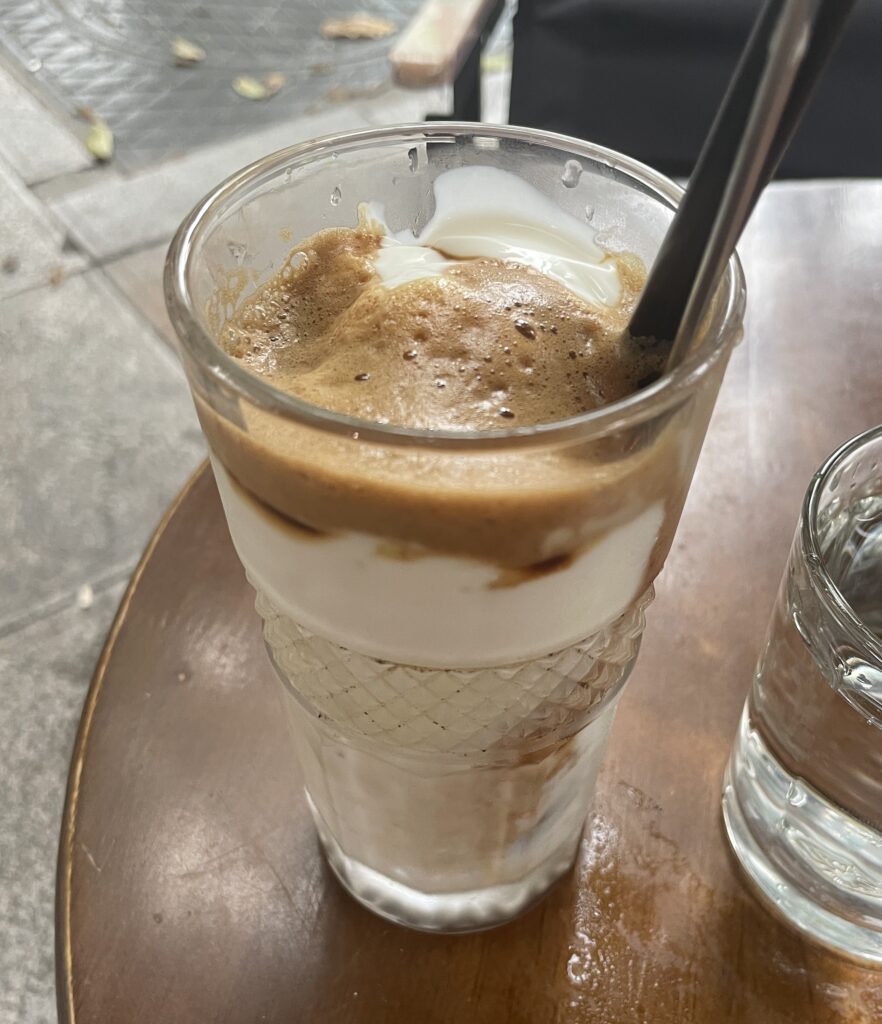
Yogurt coffee might sound strange at first, but trust me, it works. This drink blends tangy Vietnamese-style yogurt with strong, bitter coffee for a mix that’s creamy, refreshing, and perfectly balanced.
Vietnamese yogurt is often made with sweetened condensed milk, giving it a rich, silky texture and just the right amount of sweetness. When the bold coffee hits it, you get this perfect contrast between tang and depth.
I first discovered it one morning in Hanoi at a small café, and I was genuinely surprised. By that point, I’d been traveling in Vietnam for over two months and had never seen it on a menu.
My first thought was, “Really? Yogurt with coffee? Is that a mistake?” But then I remembered, if egg coffee exists, why not yogurt coffee?
Every part of me, before trying it, thought it wouldn’t work, but after one sip, I was hooked.
Avocado Coffee (Sinh tố bơ cà phê)
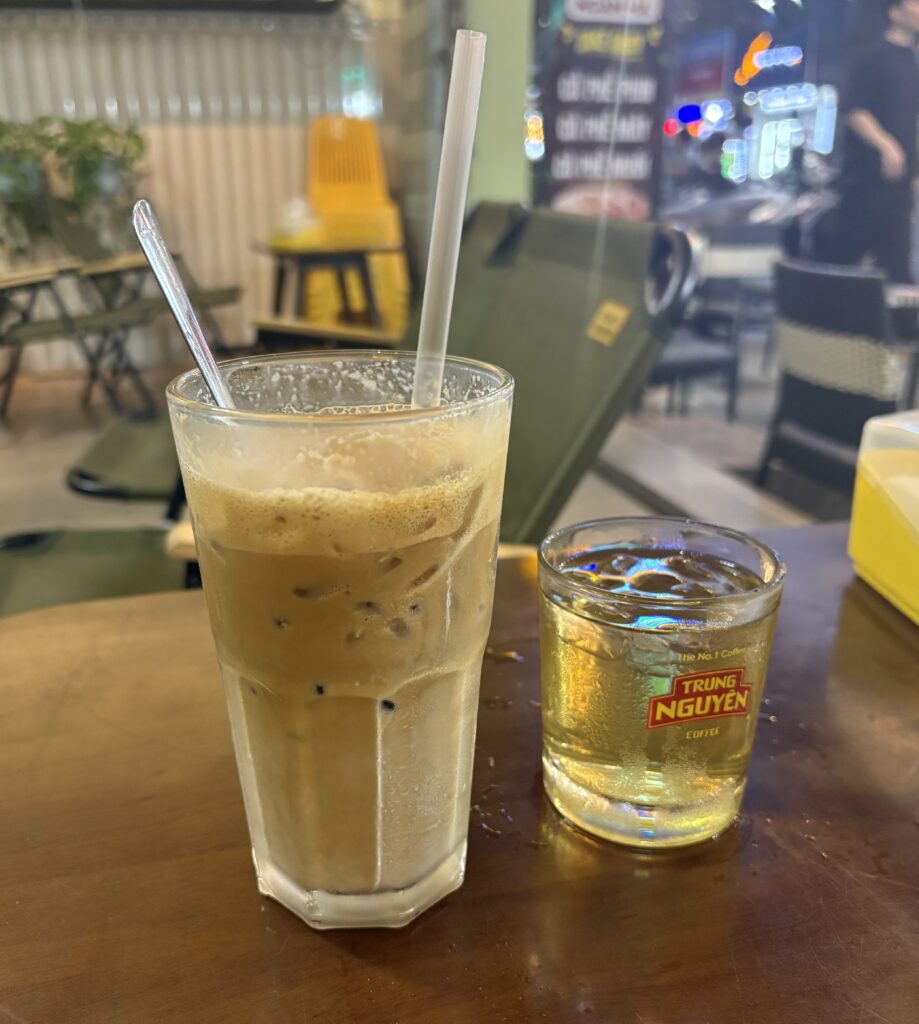
Avocado coffee might sound unusual, but in Vietnam, it’s a creamy, indulgent treat that’s part smoothie, part caffeine kick. Ripe avocado is blended with sweetened condensed milk until smooth, then topped with a shot of strong Vietnamese coffee.
The result is rich, slightly sweet, and surprisingly refreshing, almost like a dessert you can drink.
I first tried it in Da Nang, and before ordering, I had two big questions: Why does this exist? and How have I never seen it before?
At this point, I’d spent a total of about five months in Vietnam over several trips, drinking one to three coffees a day, and yet I had never come across avocado coffee.
The kind man working at the café assured me it was a well-loved local drink, so even though I was tempted to stick to my usual order, I decided to trust him. One sip later, I was glad I did; it turned out to be another unexpected hit.
Vietnamese Coffee Beans vs Other Coffee Beans
Before visiting Vietnam, I honestly didn’t know much about coffee beans. Like many people, the only name I recognized was Arabica, because I’d see it on café menus everywhere.
It wasn’t until I started drinking coffee in Vietnam, realizing just how much stronger and bolder it was, that I began digging into why it tasted so different.
Talking with locals, I learned that Vietnam primarily uses Robusta beans, often called the “stronger” coffee bean compared to Arabica. While you’ll sometimes find blends of Robusta and Arabica in Vietnam, I’d say 80–90% of the coffee you drink here is pure Robusta.
That’s why some travelers find it almost overwhelmingly strong, while others, like myself absolutely fell in love with it. In fact, I wasn’t even a daily coffee drinker before Vietnam; it was Robusta coffee that turned me into one, because nothing else, not even Italian espresso, hits quite the same.
Here’s how Vietnamese Robusta compares to the Arabica beans you’ll find in most other countries:
Vietnamese Coffee Beans (Robusta):
- Bolder, more intense flavor with a slightly bitter edge
- Higher caffeine content—about double that of Arabica
- Naturally less acidic
- Often roasted with butter or sugar for a richer, caramelized aroma
- Grown mostly in the Central Highlands of Vietnam
Arabica Coffee Beans (Common in Most Countries):
- Milder, smoother taste with floral or fruity notes
- Lower caffeine content compared to Robusta
- Higher acidity for a brighter flavor profile
- Typically roasted without added ingredients
- Grown mainly in higher altitudes in countries like Brazil, Colombia, and Ethiopia
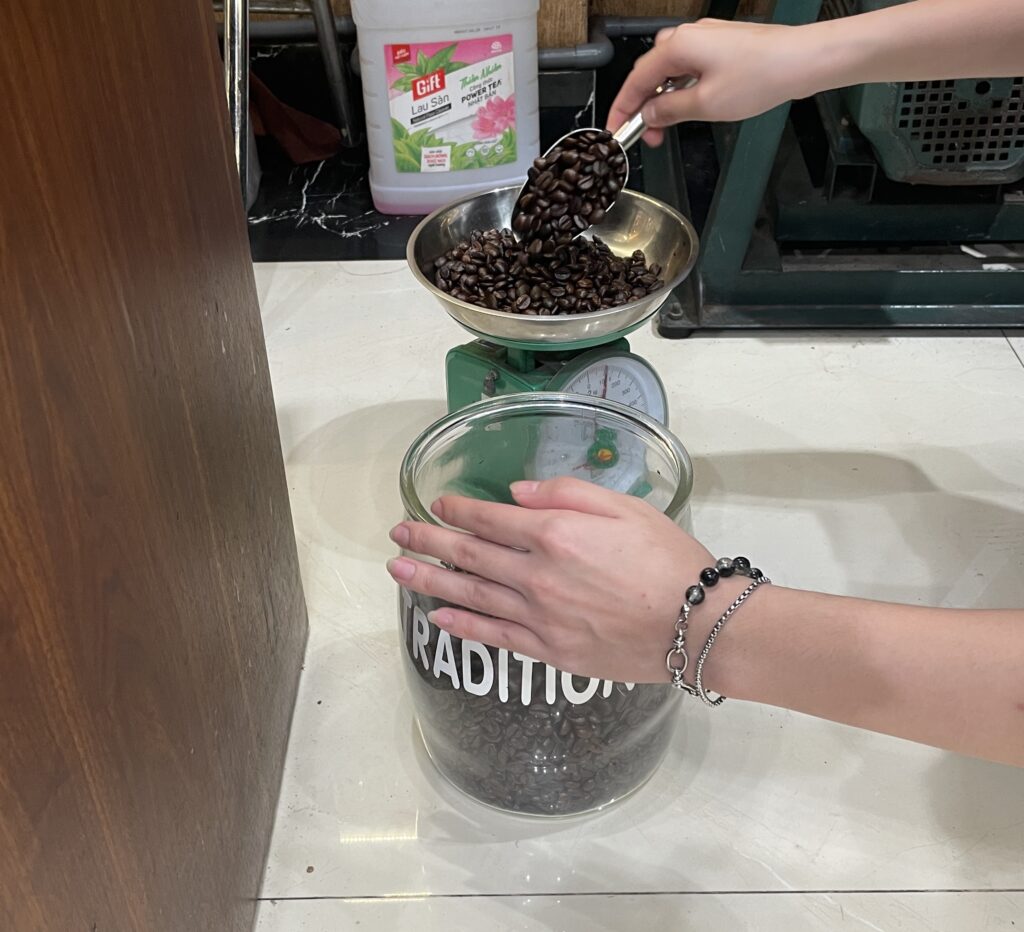
Coffee Culture in Vietnam
The coffee culture in Vietnam is unlike anywhere else in the world. I’ve traveled quite a bit, and while many people rave about Italian coffee for its style and history, Vietnam is in its own league.
Fun fact: Vietnam is the second-largest coffee producer in the world, only behind Brazil, and once you experience coffee here, you’ll understand why.
Coffee shops are absolutely everywhere in Vietnam. From old cafés in Hanoi that have been around for decades to sleek modern spots in Saigon, you can’t go far without passing a phin drip or hearing the clink of ice in a glass.
The variety is another reason coffee here stands out. You’ll find everything from traditional cà phê đen (black coffee) to creative twists like coconut coffee, yogurt coffee, and even avocado coffee.
And in many places, your coffee will come with a small glass of tra đá (pronounced “jada” in English), Vietnamese iced tea that’s usually served chilled, with warm versions being less common. It’s lightly flavored, incredibly refreshing, and the perfect balance to Vietnam’s bold, robust coffee, and I recommend you sip both as you drink.
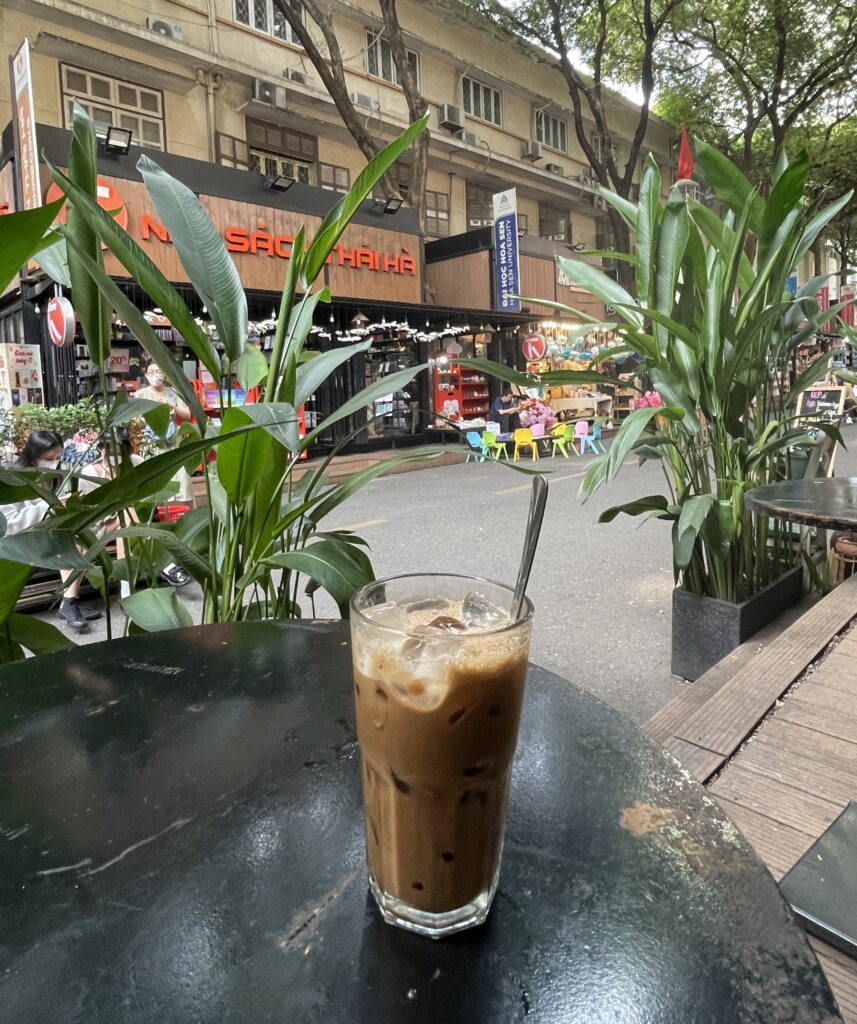
I once found myself at a café in Hanoi at 5:30 a.m., sipping strong coffee alongside a group of older Vietnamese men who were chain-smoking and chatting away.
I enjoyed staying there and soaking in the history of the place in the quiet morning hours, in all its smoky, lively glory, and as the only foreigner, I felt like I was witnessing a slice of daily life few tourists see.
What really sets Vietnam apart is how social coffee drinking is. In Saigon, it’s not unusual to see locals, especially older men, enjoying an intense, bitter brew at 11 p.m.
Cafés aren’t just for grabbing a quick caffeine hit; they’re gathering spaces where people linger for hours, talking, working, or simply watching the world go by.
Whether you’re perched on a tiny plastic stool at a street stall or tucked into a cozy café corner, coffee here is as much about the atmosphere and connection as it is about the drink itself.
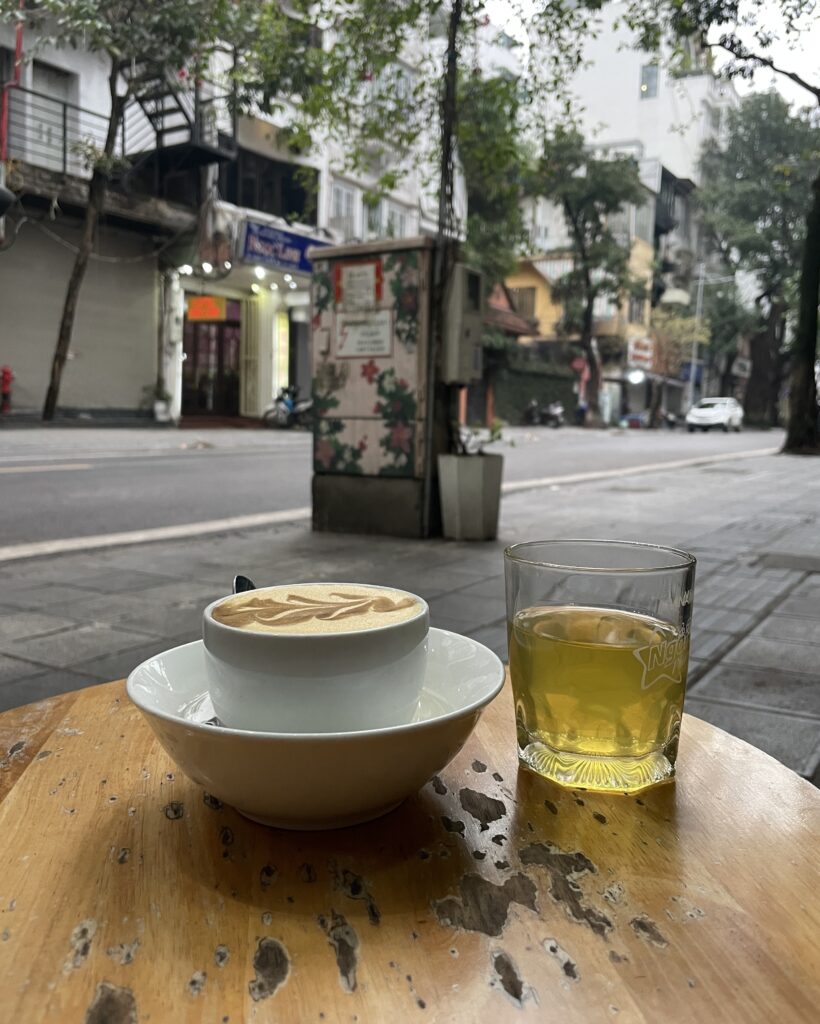
Why Exploring Vietnam’s Coffee Variety Is a Must
Vietnam’s coffee scene is unlike anywhere else, blending tradition, creativity, and bold flavors into every cup.
From the intense kick of robusta beans to unique creations like egg coffee, coconut coffee, and salt coffee, each drink tells a story of local culture and innovation.
And along with Vietnam’s iconic coffee, you can’t forget to try the pho in Hanoi, the birthplace of Vietnam’s most famous dish, for the full experience.
Whether you’re a casual coffee drinker or a devoted enthusiast, trying different Vietnamese coffee types isn’t just about caffeine; it’s about experiencing a rich, flavorful part of the country’s identity.
If you have yet to visit Vietnam and aren’t sure how to plan your trip, check out my 2-week Vietnam itinerary for the perfect starting point.
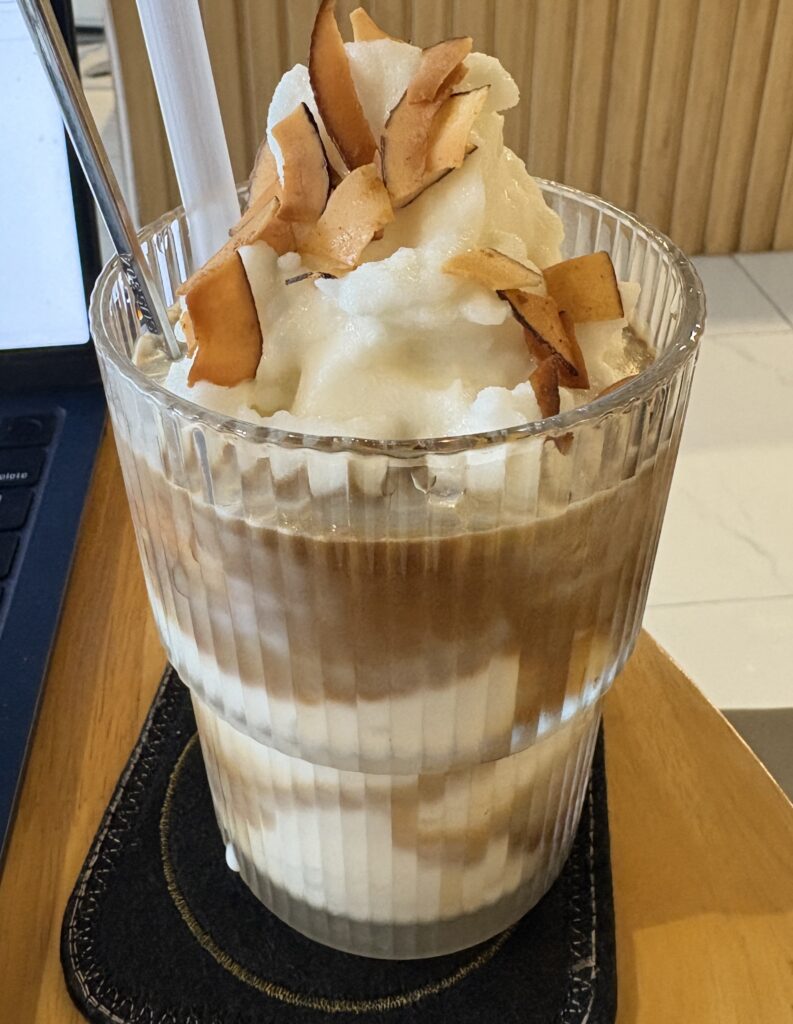
What is the most popular type of Vietnamese coffee?
The most popular is cà phê sữa đá, or Vietnamese iced coffee with condensed milk. It’s sweet, strong, and served over ice, a refreshing staple across Vietnam.
Is Vietnamese coffee stronger than regular coffee?
Yes, most Vietnamese coffee is made with robusta beans, which have nearly twice the caffeine of arabica beans used in much of the world.
Can you make Vietnamese coffee without a phin filter?
While the traditional method uses a phin, you can use a French press or pour-over in a pinch, though the flavor and strength may differ slightly.
Why does Vietnamese coffee use condensed milk?
Condensed milk became popular during French colonial times when fresh milk was scarce. It adds sweetness and a creamy texture that balances robusta’s strong flavor.

